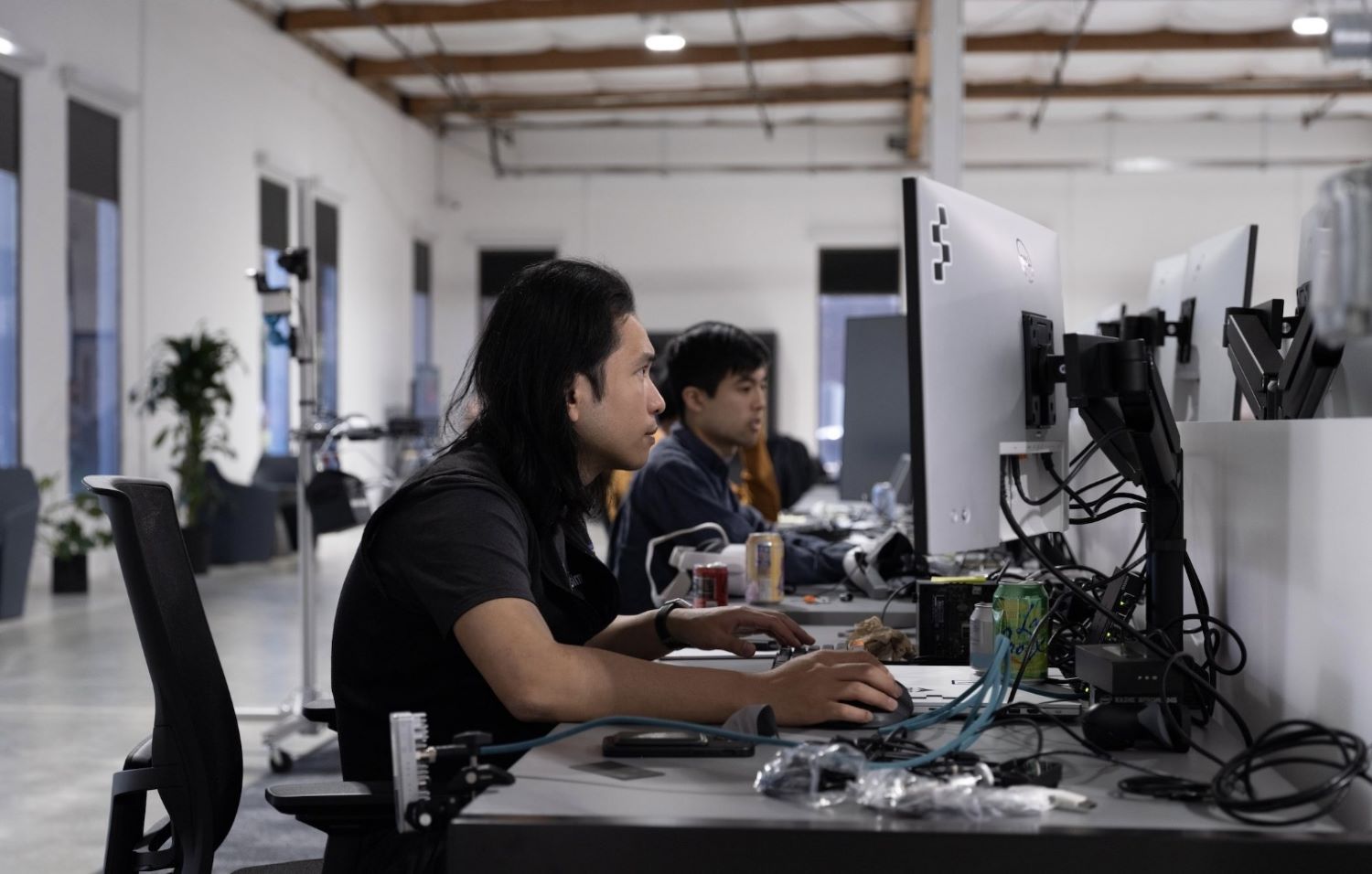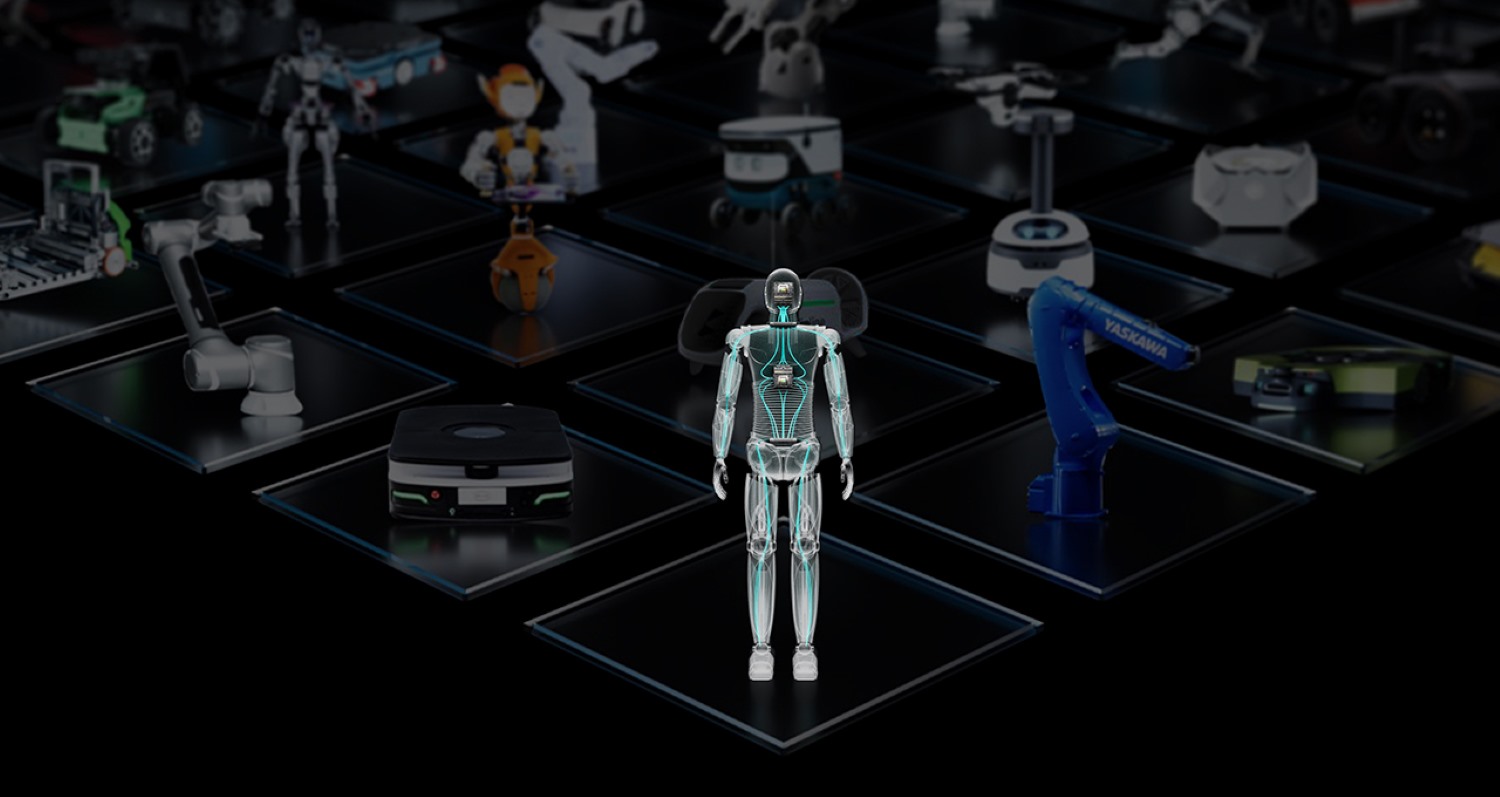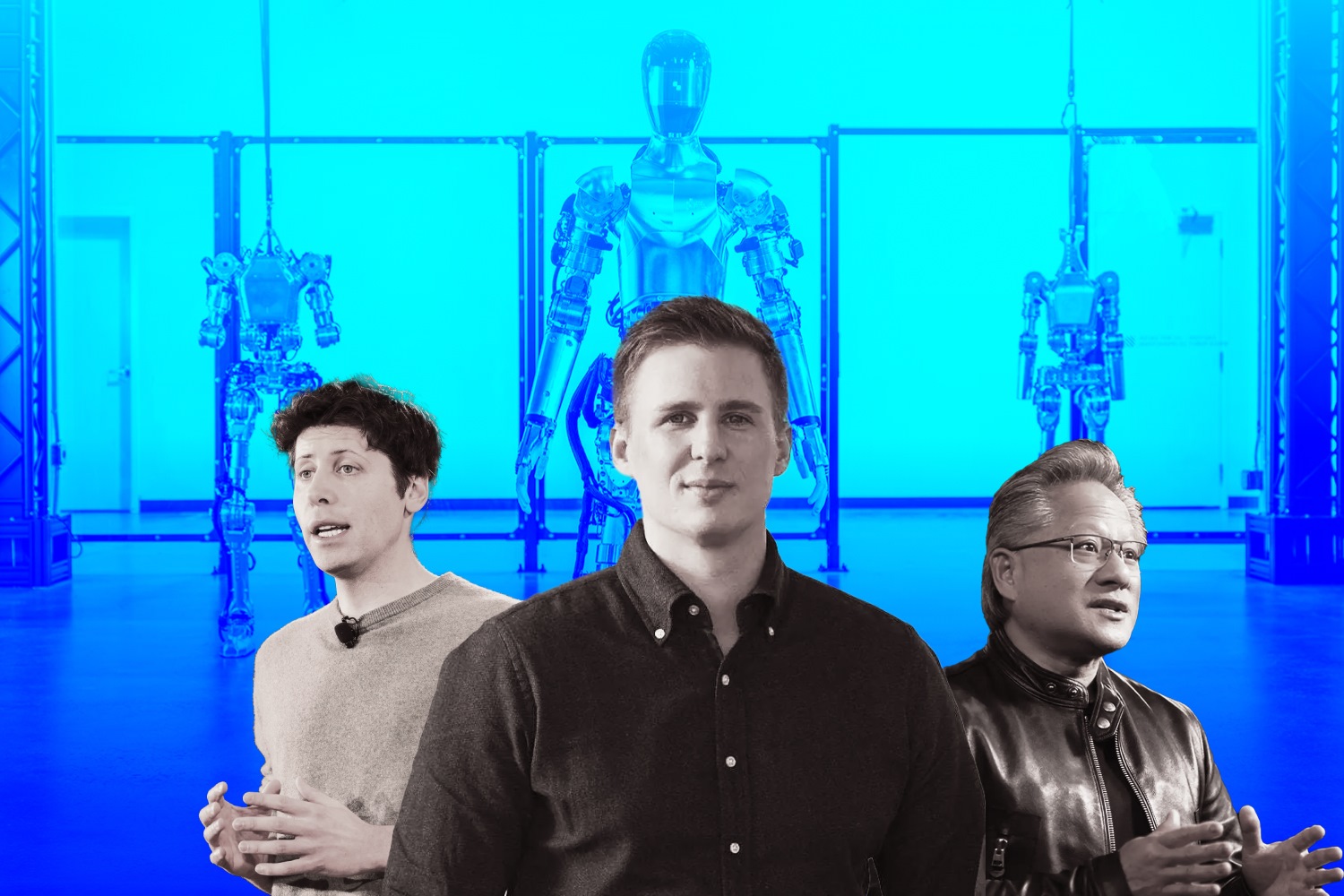AI Robots’ Takeover – The Future of Global Workforce
Have you ever heard about the term dark manufacturing?
To break down, “Dark manufacturing,” also referred to as “lights out,” is a term in Industry 4.0 where manufacturing operates fully automated without human intervention. In such a setup, robots, artificial intelligence, and other advanced technologies facilitate complete automation.
To get to that point, we need to level up all the key elements that have just been mentioned above, one of those important pillars is robotics.
Robots, once the stuff of fiction in movies and literature, are now a common sight. They play a crucial role in assembling and shipping goods in factories and warehouses worldwide. Although today’s robots are more advanced than ever, they have not yet reached the potential peak depicted in sci-fi genres.
However, some of the companies have proven otherwise, we may be closer to that plot in these movies than we have ever thought. Let’s dive in.
AI Robots Targeting the Global Labor Shortage
All industries in the United States have been impacted by the labor crisis, but manufacturing has been most severely hit. As of June 2023, there was a scarcity of over 600,000 steady manufacturing positions in manufacturing companies across the country due to the high level of industrial demand.
Because it can hinder growth and productivity, the labor shortage has become a critical issue for employers, workers, and investors when older staff retire. This is enough to create a new market where humanoids join the workforce. Many businesses have been pushing this vision to reality, and one of the names that has been making headlines these days is Figure AI.
Figure AI – Riding the Coattails of AI Giants
Figure AI, founded in 2022. Figure AI Inc. is a California-based tech startup with a focus on general-purpose humanoid robots. Within just 1 year of its inception, the company raised $70 million, but now they’ve recently raised a whopping $675 million and have a valuation of $2.6 billion, officially a unicorn.
It’s a serious business when the likes of Microsoft, Nvidia, Jeff Bezos, Intel Capital, and many others have become investors. Figure’s mission, according to their website, is to “expand human capabilities through advanced AI.”

They aim to do so by specifically targeting the labor force. According to Figure, the labor force is shrinking. They mentioned that “there are 10 million unfilled jobs in the United States. 7 million of those job openings are for essential roles such as warehouse, transportation, and retail, and there are only 6 million people available to fill these open positions.”
While key warehouse suppliers predict they will run out of people to hire by 2024, “as we reach the upper limits of our production capability, humanoids will join the workforce with the ability to think, learn, and interact with their environment safely alongside us.”
Figure’s founder Brett Adcock is no stranger to the tech industry; he’s previously founded two other companies, Vettery and Archer Aviation. So, with his experience, Adcock has built a team of Industry veterans, including professionals who have worked at Boston Dynamics, Google Deep Mind, and Tesla.
Perhaps their biggest breakthrough has come in the form of their partnership with OpenAI. In a press release in February 2024, figure announced their collaboration with the ChatGPT’s creator. Shortly after that announcement, Figure’s first robot is here. Now let’s look at the robot Figure 01 and see why there’s a hype around this.
The Physical Body of ChatGPT
“Figure 01 brings together the dexterity of the human form and cutting-edge AI to go beyond single-function robots and lend support across manufacturing, logistics, warehousing, and retail,” explains Figure AI.
Figure AI trains its robots to perform new tasks through simulated learning and teleoperation. Its videos show that its humanoids can recognize when a task is successful or unsuccessful and can figure out how to finish it on their own.
They even have the capacity to generate real-time modifications if things begin to veer off-track.
The robot has microphones and cameras, so when someone asks it to perform something, the images from the cameras and the transcribed text are recorded. These inputs are used by OpenAI to train a sizable multimodal model that can comprehend both text and visuals.
The model processes the full conversation, including previously shared images. It then decides which specifically learned closed-loop action to take by selecting and loading the relevant neural network configurations onto the GPU and then executing it.
The mechanical action of Figure 01 is rapid, operating at 200 HZ, which means it sends back instructions at 200 times per second, resulting in a reaction time of 5 milliseconds for all those micro adjustments. Humans, by comparison, have a reaction time in the order of 250 milliseconds.
Compared to other robots, Figure 01 key difference is the ability to directly converse in natural language in order to get tasks done for you. It’s not a new concept, Google had did the same thing. At that time, we saw that the concept was still in its infancy, and the robot was quite slow.
Essentially, they are using a combination of different neural networks to sort through audio and visual inputs, understand them, and then perform the appropriate actions. As the videos shown, there’s still some latency between talking and getting a response, so there’s still some work to be done if these robots are going to be used in large-scale commercial applications.
However, it seems like Figure didn’t want to waste any time. Even before the demo earlier in the year, Figure signed an agreement with BMW Manufacturing. They’re going to test the Figure 01 robot at the car maker’s plant in Spartanburg, South Carolina. Let’s see what Figure 01 will bring to the table in the future.
The AI Robotics’ Race Gains Steam

In fact, Figure AI has just joined the game recently, and the company isn’t the only one that makes the news when we look at the broader picture of the robotics industry.
First up is Digit, made by Agility Robotics and backed by Amazon. Digit is a robot its maker says is ready to do what human warehouse workers do. They can lift about 35 lbs, about what a person would weigh, and reach about the size of what a person can reach.
Next up, Apptronik’s Apollo is designed to move goods around a warehouse and can work for 22 hours per day. All you need to do is swap out the battery every few hours. Deliveries start in 2025. The company is also working with NASA on a robot called Valkyrie, aiming to work in dangerous environments and perhaps even future spacewalks.
Toyota and Hyundai are also currently working on robots of their own, but less seriously than the others.
Earlier this year, we saw Elon Musk sharing a video of Tesla’s Optimus robot folding some clothing. At first glance, it was impressive, but the curtains came down later when Elon added that Optimus couldn’t do it autonomously. But since then, there’s been footage of the Tesla bot carrying boxes, watering plants, walking, crouching, handling delicate objects such as eggs, and performing other domestic activities.
Perhaps the Atlas robot by Boston Dynamics is the most agile robot we’ve ever seen. We’ve seen it organize objects and even perform backflips. An advanced control system and state-of-the-art hardware give the robot the power and balance to demonstrate advanced athletics and agility.
Many of these amazing achievements have previously failed because the robots’ instructions needed to be laboriously hand-coded. Now, with generative AI and the latest generations of models, robots have started to be able to rapidly comprehend their surroundings and adjust effortlessly with no hard coding.
The Cojoined Effort of Behemoths
Several companies including Google, Figure, Microsoft, Tesla, and Boston Dynamics are actively pursuing the integration of AI models with physical bodies, a concept known as “embodiment.”
Nvidia, a leading AI chipmaker, is committed to expediting this process. At the GTC event in San Jose, Nvidia unveiled “Project GR00T,” a software platform designed to empower robots to comprehend human language and imitate human actions.

The computer model promises to help today’s robot makers build machines capable of interacting with humans and navigating real-world environments. “The ChatGPT moment for robots might be around the corner,” says Nvidia CEO Jensen Huang.
Besides Boston Dynamics, the giant has also mentioned that they have been working with Agility Robotics, Apptronik, and of course, Figure AI.
Picture this, OpenAI provides the foundational models, Nvidia provides some of the processing hardware and software packages, and finally, there’s going to be a plethora of different robot bodies by different vendors. That’s how the industry standard is forming.
Robots and Human: Symbiosis or Rivalry?
By 2025, robots and artificial intelligence (AI) are anticipated to become integral parts of our daily lives. This development could significantly impact various business sectors, particularly healthcare, customer service, and logistics. Already, AI has contributed to breakthroughs in medical research and climate research, in addition to advancements in self-driving cars.
AI is Taking Over the Workforce
As was seen since the AI boom a couple of years ago, it was the cognitive jobs that were the first to be impacted. In 2017, only one in five companies used AI, according to McKinsey. Now, half of all companies do.
We’ve already seen many companies laying off thousands of employees, in part due to technological advancements like AI. This is completely the opposite of what most people thought would happen.
Goldman Sachs last year reported that over 300 million jobs could be lost or diminished by AI. Most at risk are legal, architecture and engineering, business and financial operations, management, sales, healthcare, art, and design.
Goldman Sachs also thinks that the price of robots and their constituent components will drop drastically, and they’ve already dropped drastically since last year. Unlike humans, robots don’t need to take a break, they don’t need to sleep, go on holidays, strike, and they don’t complain.
So as soon as these robots are feasible and cheap enough, companies will be chomping at the bit to install them. However, these replacements aim to be good for the society.
How the AI Robotics Will Help?
According to Figure AI’s literal master plan, the mission is to expand human capabilities through advanced AI. They want to develop general-purpose humanoids that make a positive impact on humanity and create a better life for future generations. And that’s actually a pretty great use case because we should use robots to work jobs that are either dangerous or people just don’t want to do.
“There are over 10 million unsafe or undesirable jobs in the US alone, and an aging population will only make it increasingly difficult for companies to scale their workforces. As a result, the labor supply growth is set to flatline this century, and if we want continued growth, we need more productivity, and this means more automation,” said Andrei Jikh, the social media influencer who runs a YouTube channel with over 2,000,000 subscribers in the personal finance space as it relates to investing and financial minimalism.
He further explained that the long term goal is to use the robots to increase our standard of living by allowing humans to eventually leave the workforce.

“Now, the way that basic-level economics works is we go to work, we get paid, we use the money to buy goods and services, and the price of said goods and services is proportional to how much it cost to make them. If we could just skip the work part and go straight to the stuff part, we would,” said Andrei Jikh.
This manual labor and combination model today accounts for 50% of the global GDP, which is roughly $42 trillion a year. But as these robots join the workforce and do our jobs better than we can, the cost of labor, in other words, how much we get paid, will go down because the competition will be impossible to beat. At some point in the future, there will come a time when the cost of hiring a human to do a job will become equal to the cost of renting a robot to do that same job.
When that point comes, we won’t really need humans to work, and over time, those robots will be able to build other robots that will further decrease the cost of labor. And as labor and compensation go down, so does the cost of goods and services. Basically, stuff and services become a lot cheaper because it also costs a lot less to make.
Andrei Jikh said that “There will come a point in the future when “manual labor” could become optional, and higher production could bring an abundance of affordable goods and services, creating the potential for more wealth for everyone. Hopefully, for the rest of us, that means we can pursue more meaningful things in life.”
However, Andrei Jikh believes that transitioning to automation won’t be simple. He thinks some industries will adopt it faster than others. Some people will lose their jobs to robots. Jikh predicts that richer industries might resist automation better, making it harder for those already jobless. He stresses the need for quick learning and adaptation for those affected.









